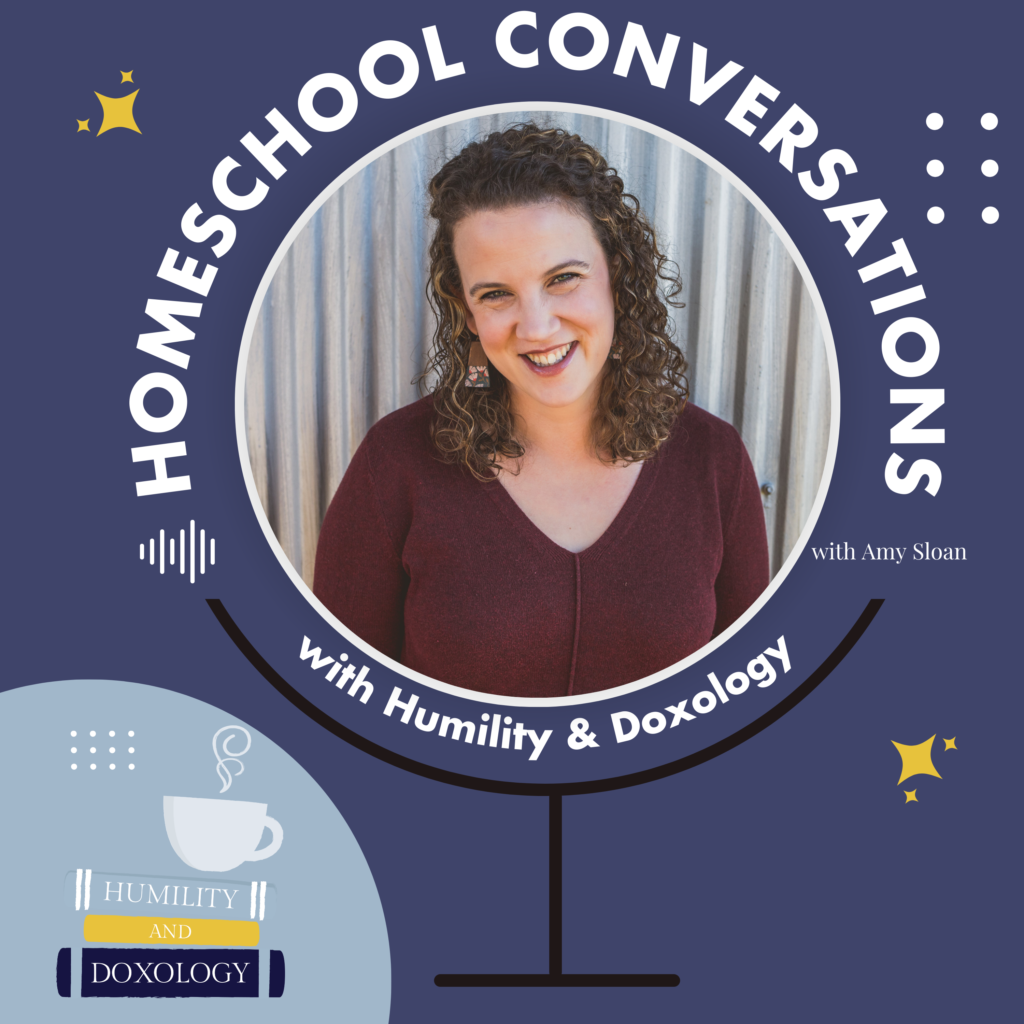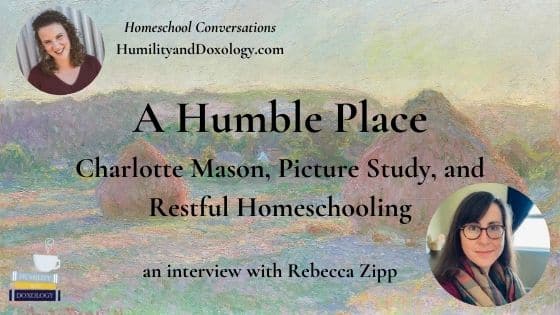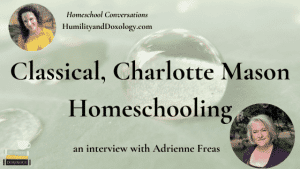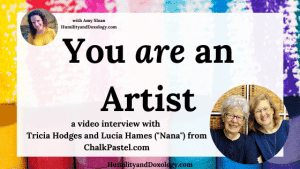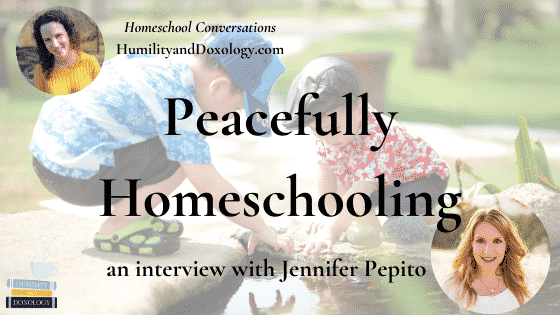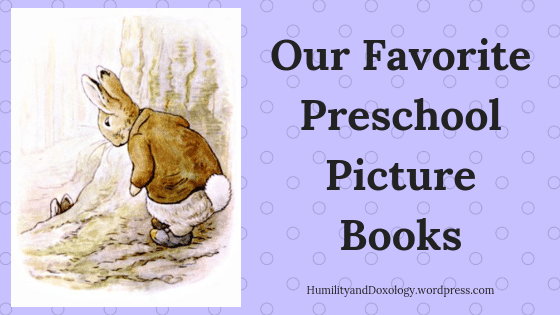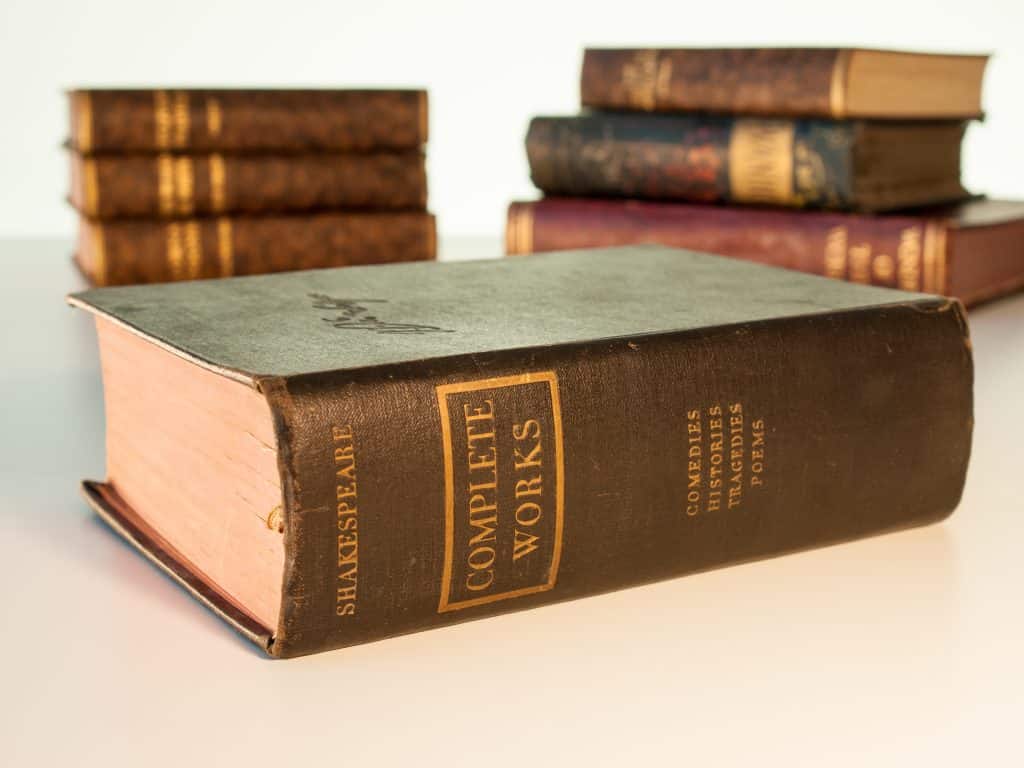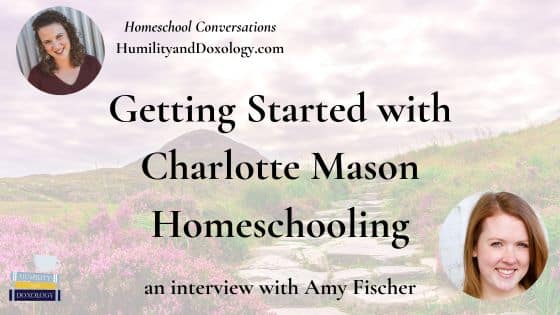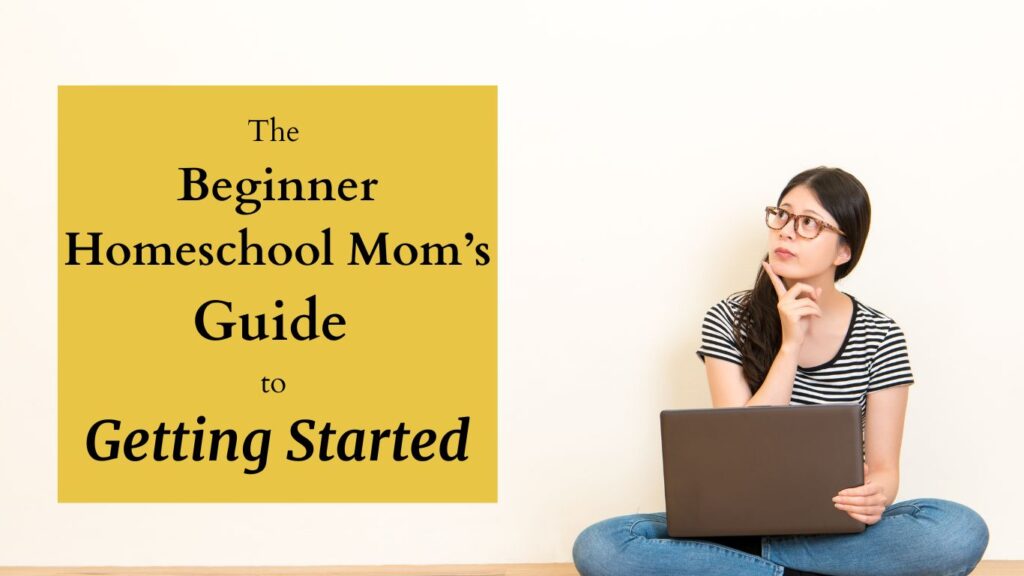Fine Art, picture study, Charlotte Mason education, and a restful approach to homeschooling… those are a few of the topics covered in this delightful conversation with Rebecca Zipp. Read, listen, or watch this episode for some much needed homeschool mama encouragement and lots of practical tips!
Be sure to check out all the other interviews in our Homeschool Conversations series!
Watch the video. Listen to the podcast. Read the show notes. Share with your friends!
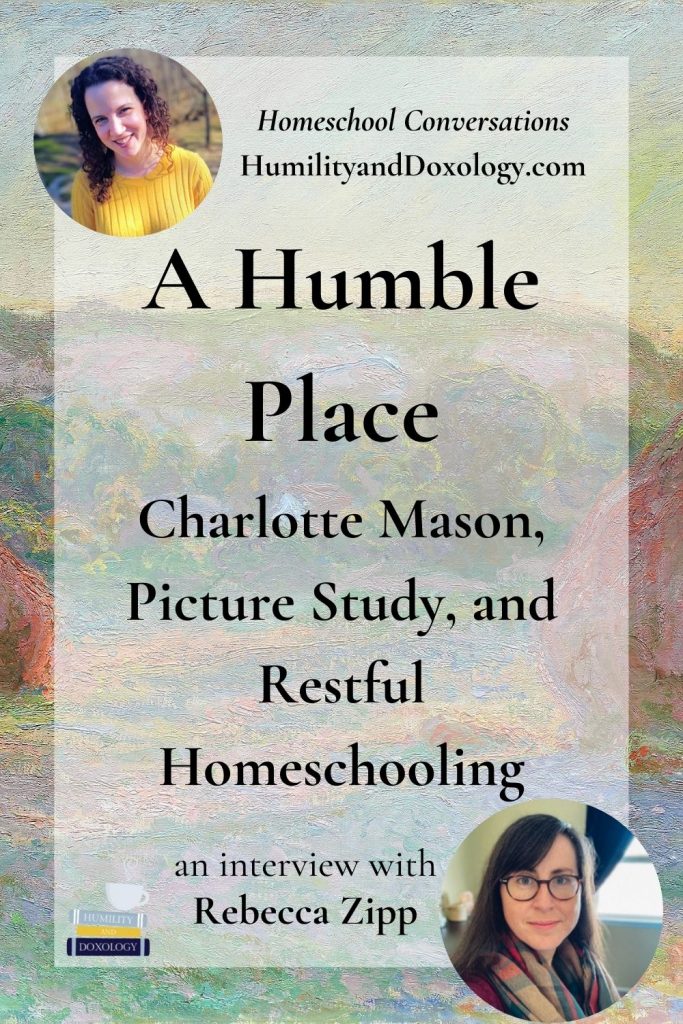
{This post contains paid links. Please see disclaimer.}
Who is Rebecca Zipp
Rebecca lives in Colorado with her husband, 2 kids, 3 cats, and whatever insect pets her kids have recently captured. She dabbles in graphic design but has a degree in art history, which she is thankful to be able to use in her homeschooling endeavors. She was introduced to Charlotte Mason in 2013 after exploring other educational philosophies and knew immediately that this was what she wanted for family. She enjoys the freedom found in a Charlotte Mason education and the fact that it not only nourishes the minds, hearts, and souls of her children, but hers as well.
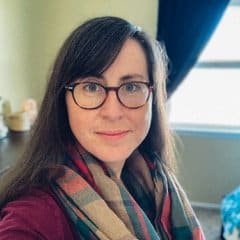
Watch my interview with Rebecca Zipp
Prefer to listen to your content? Subscribe to Homeschool Conversations on Apple podcasts or wherever you get your podcasts so you don’t miss a single episode!


Amy: Hello, everyone. Today, I am delighted to be joined by Rebecca Zipp. Rebecca lives in Colorado with her husband, two kids, three cats, and whatever insect, pets her kids have recently captured. She dabbles in graphic design, but has a degree in art history, which she is thankful to be able to use in her homeschooling endeavors. She was introduced to Charlotte Mason in 2013 after exploring other educational philosophies and knew immediately that this was what she wanted for her family. She enjoys the freedom found in Charlotte Mason education and the fact that it not only nourishes the minds, hearts, and souls of her children, but hers as well. Thank you so much for joining us today, Rebecca.
Rebecca Zipp: Well, thank you for having me. I’m honored.
Amy: Could we start just by you telling us a little bit about yourself and your family and how you came to start homeschooling?
Rebecca: Okay. As you said, I live in Colorado and I’m actually originally raised in Minnesota. I kind of consider that my home. My husband and I have been married for 16 years and we have a 10-year-old boy and a 7-year-old girl. I don’t really think there was ever a time that I didn’t consider, or I thought about not homeschooling. Even when my son was teeny tiny and the kids around his age were starting to go to preschool and being enrolled in that, we just didn’t do it. We just didn’t enroll him. We did our own little pseudo-preschool at home where we just read books and did crafts together and went on little field trips and things like that. It worked really well and it felt really natural. We just naturally evolved into homeschooling when he reached school age as well.
Homeschooling Philosophy and Charlotte Mason Education
Amy: Rebecca, how has your homeschooling philosophy and approach to education changed over the years? Like were you always drawn to Charlotte Mason or tell me a little bit about that process?
Rebecca: Well, when I first started thinking about homeschooling, I didn’t know about Charlotte Mason yet. I think my son was probably about two, and I was looking at other approaches. I went to public school and then private school, my husband graduated from public school. Neither one of us had really much experience with it. I had a good friend who had been homeschooled, but I started looking at different philosophies and Montessori was one that really appealed to me. We started to do some Montessori things. I started looking at Waldorf, but there were parts of it that really I didn’t like. I didn’t go far down that path. Then in 2013, all of these– I used to do work for bloggers and all of these bloggers were talking about this woman named Charlotte Mason. I just, “Who’s Charlotte Mason? I don’t know.”
I started reading more about her. At first, it was like, well, she spends a lot of time outside and she reads a lot of books. Okay, I guess that sounds good. The deeper that I got into it, the more that I read about her and just what people were talking about, how they implemented her philosophies, it just really resonated very deeply with me. Even as we’ve gone through, we’re just ending our fifth year homeschooling, even as we’ve gone through these five years, just it’s even my view of homeschooling and what education is about has actually evolved a little bit even within these five years, but it’s still very much Charlotte Mason.
Amy: It sounds like it’s been an organic growing process. A lot of the moms that I’ve talked to who talk about their changes or growth in home education, philosophy, and approach, normally, it hasn’t been some like “this day we were doing one thing and the next day we just totally changed gears.” It’s more a living thing, like homeschooling and education is this little plant that we’re nurturing and sometimes it surprises us or sometimes it takes us in a different direction, but it’s just slowly growing and developing.
Rebecca: Yes, definitely. It’s been just even within, like I said, even within the philosophy of Charlotte Mason’s philosophies. When I first started looking at education as a way to allow my children to be contributing members of society and enter the workforce. That’s what the main goal of education is, and that has changed tremendously. Especially just in the last few years, because I can see how that education that I was given was really inadequate. That was the goal of that education and now as I’m going through all of this with my son and my daughter, it feels like I’m redoing my own education, but then I can see the value of just learning just on its own. That’s been a really neat change for me.
Amy: I love that we can have something beyond just a pragmatic practical approach to education. Well, maybe I shouldn’t say not– it’s not that it’s impractical, because actually this is the most practical thing you could be doing. It’s like in our family devotions, we think, “Really, are you going to invest that much time every single day as a family in this endeavor?” You’re not achieving something that you can see with your physical eyes, and yet, that’s the most practical thing we could possibly be investing in.
Rebecca: Yes, definitely.
A few of Rebecca’s favorite parts of homeschooling
Amy: That’s obviously one wonderful part of homeschooling. Are there any other things that are your favorite parts of homeschooling?
Rebecca: There’s a lot. Obviously, it’s challenging at times, but I think I love the flexibility. If we wake up one morning and it’s a beautiful day outside, we can say, “Let’s go for a hike today. We’ll push off our reading to next week,” or whatever. We have that flexibility. If a subject or a particular book is challenging for one of my kids, we can take it slower or we can look at alternatives. If there’s a specific subject that really interests them, like my son he’s very science-minded. Like this last term in our homeschool, I said, “Let’s look at different science curricula.” He picked out one on magnets and we went with it and that was a lot of fun.
This term, whenever we go for hikes, they come back with pockets full of rocks. So many rocks, we have so many rocks. I looked at that and I said, oh, well, why don’t we do geology this term? That’s what we’re doing this term.
Also I think one of the biggest things is that I get to be with them every day. The idea of sending them off somewhere for eight hours a day, where they’re with people that I mostly don’t know that it just doesn’t feel natural to me. I’m excited that every day I get to be with them, I get to watch them growing and learning and becoming more of who God created them to be. I don’t know, just being with them because we only have a finite amount of time with our kids and I want to make the most of that. I feel like that is a huge benefit for homeschooling for me, is that I get to be with them.
Amy: Now that my oldest is a junior in high school, and I’m just seeing how little time left we have, it makes me even more thankful and appreciative for all the time that we have spent together, not just me with my son, but also the siblings together and it’s just such a precious gift of homeschooling.
Rebecca: Yes, definitely.
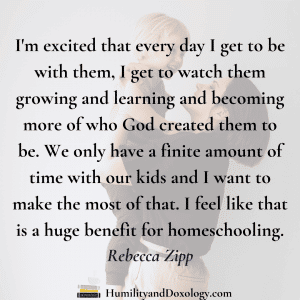
Challenges of Homeschooling
Amy: Well, it’s not always fun and easy. What are some of those challenges of homeschooling and how do you seek to overcome those challenges?
Rebecca: When I first started homeschooling, we were doing my son’s kindergarten year. I’m very much check off the boxes kind of person. We had to do everything. We had to do everything on our list every single day. We could not miss a day for any reason, unless one of us was sick. There was no flexibility.
Fortunately that year it was really relaxed. It was only about 45 minutes a day. It was really, really, really simple, but going into his first grade year, year one, I carried that, and as time has progressed, I’ve seen that it really complicates things and makes things really difficult when you don’t embrace that flexibility of homeschooling. That’s been a challenge just trying to say no to that part of my personality and say, “It’s okay, we just don’t do this book, or we skip this or we substitute something else.” Again, like I said, that’s also been a blessing. I think that helps encourage me in that area because I can see it paying off when we do have that flexibility.
Then I think just trying to be a teacher and a mom is sometimes hard, because sometimes you have to be the bad guy. You have to be the one who really makes them understand that, “I know you don’t like to do this, but we really have to do it. If we don’t do it, it’s really bad,” not necessarily specific subjects, but overall, there are things that are hard, they are challenges for our kids. Then we have to be the ones to force that, “No, sorry, I know it’s hard, but we still have to do it.” That’s been hard for, at times, for just how to handle that in a loving and gentle and understanding way.
Amy: I think it will be encouraging for moms to hear if they’re facing that struggle though, that they’re not alone. There’s not something wrong with them or their homeschools or their kids. This is a very common struggle. I don’t think we’ll ever completely fix it or overcome it, but we keep working through it together with our children and as family.
Rebecca: I think there’s so much in that, like that was a great question to ask because I think so often we, especially with like social media, we look at how other people do homeschool or anything really. I think homeschool just because I’m in that world, it always seems like everybody else has it figured out and they’re doing it perfectly and everything’s just they’ve got their nice flat ways and stuff like that. It’s just so perfect and why can’t mine look that way?
My kids aren’t, don’t behave. My kids are monsters sometimes. It’s good to know that, no, it is challenging. It’s not an easy thing to do and embracing that and encouraging each other to work through that. Also, when we share that it’s been challenged, you can say, “Okay, but this is what I did to try to work through that. Maybe other people can try that too.”
Amy: If your kid’s clothes don’t match like the curriculum, so you get this really great photograph, you’re okay, it’s all right. I never can do that.
Rebecca: I’m not that talented or nor do I have the time to do that.
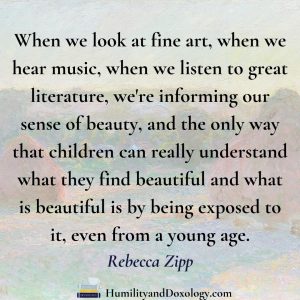
Art History in our Homeschools
Amy: Rebecca, one of the main reasons I wanted to talk to you today, it was last season, I was chatting with Adrienne Freas on the podcast and she was talking about picture study and Charlotte Mason and classical education. She recommended that I speak to you specifically about picture study in our history and things like that. I was like, “Oh, great. I need to talk to Rebecca about this.” Kind of going back before we talk about it in the context of our families, what first sparked your own interest in art history and then from that, like why do you think it’s important to include it in our own homeschools?
Rebecca: Well, I always had an interest in art. When I was a little girl, I loved to draw and I loved to look at art books. I was raised by just my dad. I didn’t meet my mother until I was 29. One of the few things that I knew about her was that she also enjoyed art. She drew and painted. I guess, I don’t know if it’s subconsciously or consciously. I felt like that was a tie.
I originally majored in journalism with an intention to become a photojournalist, but just a few months in, I decided that wasn’t for me. I switched to graphic design and one of the requirements for fine arts degrees or arts degrees was art history.
I took an art history class and I was just completely hooked. Before the end of that term or that semester, I switched again. Even though I switched twice during my freshman year, I never switched in degree in that. I’ve always enjoyed it, always found it fascinating and loved it.
That was actually one of the big draws for me with Charlotte Mason was that she put an emphasis on exposing children to fine art. I do think that’s very important. I feel like any more beauty, certain kinds of beauty are becoming less important in our society. Even just near where my husband’s old office was, there was a STEM school, and that’s really becoming more and more popular because it’s productive and it fulfills a need or requirements that is tangible.
It’s usually very lucrative, the engineering and science fields, and they’re eliminating the arts. There’s no music, no fine arts, no literature and those things. It makes me really sad for one thing, but I see a loss in that too, because I feel like when we look at fine art, when we hear music, when we listen to great literature, we’re informing our sense of beauty, and the only way that children can really understand what they find beautiful and what is beautiful is by being exposed to it, even from a young age.
I feel like that’s what fine art does. It shows us the beautiful, and it also is part of our history. Just on a basic level, so many of these paintings depict historical events or historical people, or even just historical fashion, just really simple things about the way life was at a given time, what was important, what was valued, and then the skill of the artists. There’s just so much in it. Then an even more basic level, it comes up in everyday conversation when somebody says, “Oh, she looks like a Mona Lisa,” or whatever. If you’re not being exposed to that, you have no reference. You’ve no idea what they’re talking about.
I think that is another example of that is how over the last 150 years or so, this is how I compare it in my mind. We have really no idea about Greek and Roman mythology, as weird as that sounds. If you read books that were written years and years ago, a lot of them reference Greek and Roman mythology, the stories and the author has the assumption that you know what they’re talking about. Now, I’m reading through Age of Fable with my son and most of these stories, I have no idea, I’ve never heard them.
That’s been so interesting to me because as I’ve read other things or even watched movies or whatever, these stories have popped up and now I understand, “Oh, that’s what they’re talking about.” I feel like that’s also true with art when something is compared with a painting or a sculpture or something like that, you need to know what they’re talking about to really be part of that conversation. I don’t know, there’s just so many good things about art to get rid of it. [chuckles]
Amy: Oh, I agree. It’s part of our cultural vocabulary to expand that, the more we understand, the more we start to pick up on that often quoted, I guess, funny, I don’t know what you would call it, but it’s like you we educate our children this way so you can get all the inside jokes the more. All of a sudden, you start picking up on all these things and books and paintings and movies and pop culture and all these things that are referencing jokes about other things from history that you didn’t even pick up on. The more you learn and grow, the more you start to pick up on those references.
Rebecca: We’re missing out on so much. It just makes me sad for the future because these things just aren’t considered important anymore.
Tips and Strategies for Including Art History in Your Homeschool
Amy: Well, let me ask you this question, because you have this background in art history, you love it. You obviously are knowledgeable about it. I can imagine a mom listening and thinking, “Well, that’s great. I’m sure that’s easy for you to include in your homeschool, but what about me? I don’t really know anything about art. I have no idea how to even start with my children.” What would be some tips and strategies for that new to art history mom?
Rebecca: Well, I think the big thing is to not overthink it. I know that it can be intimidating, especially as homeschool moms, because it feels like sometimes we try to cram every little tidbit of facts and education in there that we can to try and round it out. With art, the beauty of art is it’s just about allowing your child to develop a relationship with the art itself. Looking at it on their own terms, interpreting it in their own way, just being exposed to it is the very most important thing. I don’t think anything else is as important as that. If you want to, you can talk about movements and schools and even the artists themselves, but I really– in order for your child to develop that relationship, I don’t think that that’s absolutely necessary.
Even just getting like those giant books that they have at Barnes & Noble in the discount section with different artists, that’s fine. If that’s all you have, as long as you’re allowing them to see that and to experience it in their own way and not guiding it. I think sometimes when I’ve seen, and I’ve been guilty of this too, when you’re looking at art with somebody, you want to point things out like, “Oh, do you see that? Oh, do you notice that?”
I think that’s especially true with our children because we want them to know, we want them to see all these things, but with art it’s just important to stand back and to say, “You know what, they’re going to see what they’re supposed to see. There something that is standing out to them maybe different than something that stands out to me, and that’s fine, either way is fine.” Really, just don’t overthink it.
Amy: That’s really encouraging. That’s probably good advice for a lot of homeschool subjects. Like, “Okay, children, sit down, I just heard this podcast and we’re going to do this in-depth study.” It’s no wonder our kids aren’t very interested.
Homeschool Picture Study
Let’s imagine I’ve got my big book from Barnes & Noble. We’ve sort of just began that exposure, we’ve dipped our toe in, but now I want to begin a little bit more formal picture study with my kids. What might a picture study time look like in an ordinary homeschool family?
Rebecca: Well, it’s just really simple. We introduce, for our picture study, we usually– I teach it in our homeschool co-op and that’s where we’re introduced to each piece. I’ll start with just a little biography of an artist and that’s really simple to do. You can even look it up on Wikipedia. It’s not the greatest resource in the world, but it gives you an idea of where that artist is coming from. Or if you have one of those Barnes & Noble books, they usually have a biography in the beginning.
What I usually do is I read it on my own beforehand, and then I tell my kids back or narrate or summarize it for them. This is where this artist was born. This is where they spent their life. This was something they were passionate about, those sorts of things that’s related to their art. If there’s a specific geographic region, we’ll pull out a map and we’ll look at that together.
I don’t really focus a lot on, again, movements or styles of painting unless that comes up naturally in the conversation. For instance, with impressionism, you’re going to look at it and think, “Well, that’s really different than what came before it.” Usually, kids pick up on those things, and so you can talk about that if you want to. Then we’ll go into the first painting and what I do is I hand it to them. We get each individual prints for each child, hand it to them face down, and then I have them flip it over. It’s actually been fun to do that because a lot of times, especially the kids in co-op, they’ll try to guess what they’re going to see or it builds excitement, which is it’s neat to see. I had one student who was always looking for cows. He really wanted paintings with cows. [laughs] He was disappointed often.
I’ll tell them to flip it over and they’ll take about three to five minutes to just look at it quietly, silently, no talking. Usually, younger kids start to, their eyes, start to wander, and things like that around the three-minute mark. The older students, probably high school, they usually really like to study them. Then once that time is over, I have them flip it back over, and then they narrate what they saw to me. It’s amazing the variety of what they come up with. Things that stuck out to them. I’ve had a lot of students say they saw things in the painting that weren’t in the painting, but you could see how it could possibly be there. They like to count things, how many clouds there are, trees, or cows, or whatever the case is.
It’s just interesting to hear what they come up with. I should say that this is how it looks in our home too. Just shorter. Once they’ve narrated it and said everything that they wanted to, we flip it back over and we talk about it, and they may have had questions during the narration. Usually, if they do ask a question, I’ll say, “Well, we’ll talk about that after everyone’s had a chance to narrate,” because I’ve found that sometimes another student’s or child’s narration answers the question of somebody else that somebody else had, and so we’ll talk about it.
I’ll usually do some research on the piece itself, but this isn’t necessary. I just really want to emphasize that this is totally not necessary. I’ll explain if there’s a story behind it. When we were doing Ruben’s, there was The Fall of Phaethon. We actually read a really summarized version of that story. If it’s about a specific topic, I can’t think of any specific examples right now, but we’ll talk about that, or if it’s just generic. I have some behind me, but like The Milkmaid by Vermeer, we’ll just talk about what life was like in Delft in the 17th century.
I’ll point out the tiles down here and how Delft is known for those tiles. We think she’s making bread pudding, just facts like that, that you can get from one of those Barnes & Noble books possibly or from the internet, but on a very simple level, talk about it together. “Oh, I really like her blue apron,” or, “What do you think she’s making?” You can ask them really open-ended questions. If there’s people in the painting, you can say, “What do you think they’re thinking about?” or, “What do you think they’re talking about? What do you think they’re looking at? If you were in this painting, what do you think you would hear? Do you think it’s cold? Do you think it’s hot?” Just things that really get them thinking about the painting and, yes, just again, just allowing them to have time with it.
Amy: I love what you just said too, because I could see as a mom with a wide age range, that this is something that would work perfectly, even with very, very young students and older students. Because each child is going to notice different things based on their own maturity and experience, but then they’re also sharing it with one another.
Rebecca: I’ve noticed the older students, it’s actually, sometimes it’s more- it’s– I found it more, I want to say enjoyable because I love it on all ages, but with the older students, there are things that you can talk about more that you possibly wouldn’t with younger students. Sometimes their insight into an artist and the life of the artist in relation to their work has been really interesting to hear as well. I really enjoy that part of it.
Amy: I’m very excited about this. I feel like so many times, whether it’s thinking about including foreign language or music, or I love Shakespeare, it’s something seems very natural for us to include in our homeschool. People will often be like, “Oh, that seems so overwhelming or crazy,” but all of these different, do these different things. We still often make them so much more complicated in our heads and then we’re afraid we’re not going to do it right or we’re not going to do it in this perfect ideal way that we think we ought to do it, so we just don’t do it at all. I am so guilty of that, specifically with picture study, this is like a real weakness. My older children, I have not had as much as they could have, but this is encouraging me that I have an opportunity to begin including it now. It’s okay. I can just move on from that, include it.
Rebecca: Yes, any time is good. Yes.
Amy: Simple is good too. I like simple.
Rebecca: Yes. I think it’s probably that’s one of the reasons why I really went into focus on this area in the homeschooling community was because I had seen that in so many places. So many people mentioned that, well, I don’t know anything about art. I don’t have an art history background, all of that stuff, and I just want to emphasize it. It shouldn’t be complicated. In fact, if it’s complicated, it’s worse. We don’t want to complicate it. We want to just keep it really simple because that’s how they’re going to get the most out of it and how they’re going to enjoy it the most, too, as far as I can sense, yes.
Rebecca’s advice for homeschooling in the early years
Amy: I love that. Yes, I know another thing that you talk about some online as I was exploring your site as you talk about these younger years in particular. Before we close, I was just curious, what would be some advice you would want to give to a new homeschooling mama or someone who has those early years in their homeschool?
Rebecca: Well, I think that goes along with what we’ve been talking about, just don’t overthink it, don’t complicate it, especially when they’re so small, don’t try to start too early, [laughs] and really enjoy those years when they’re teeny tiny. Don’t put too much pressure on yourself in the beginning, and even as you go through– my oldest is in fourth grade, so I have the experience up to fourth grade, but I look back now on how much pressure I put on myself when he was in kindergarten and first grade and even in the second and third grade, and I just thought, “I really didn’t need to do that.” I didn’t enjoy that time, and in some ways I put pressure on him that I didn’t need to because I was freaking out like, “Oh, no, this is a big deal, I’m going to screw them up.”
It’s really hard to screw your kids up just by doing too much. Yes, don’t overthink it.
I hesitate. In some ways, I hesitate to say it because I know that feeling, that feeling of just wanting to do everything right and wanting to do everything perfect and I want to speak into that and say, “I understand. I understand that feeling, that’s a very real feeling and I don’t want to dismiss that,” but then at the same time, I just want to say, ‘Okay, you can relax a little bit. [chuckles] it’s okay, it’ll all be okay,” [laughs]. If that makes sense.
What Rebecca is reading lately
Amy: Definitely, such good encouragement. Well, Rebecca, here at the end, I’ve been asking all of my guests this season the same couple of questions, I’m going to ask these to you as well, and the first question is just what are you personally reading lately?
Rebecca: Well, right now, I am reading The House of Mirth, I found Susan Wise Bauer’s The Well-Read Mind List, and that’s on there, so I’ve been going through that. Then I’m reading Devoted which is a book, I think it’s like 30 chapters or 30 stories about godly moms, and their godly sons and how their mothers affected their lives. I just today in the mail got Jayber Crow, so I’m going to start that one. Then I’m reading to with my kids, I don’t know if that counts, but I’m enjoying them. [laughs]
Amy: Yes, do tell.
Rebecca: I’m reading Johnny Tremain with my son, which I haven’t read since I was in junior high, and I forgot how good it is, so that’s been fun. I’m reading Tumtum and Nutmeg with my seven-year-old daughter. [laughs]
Amy: So fun. A book that is worth reading when you’re young is worth reading again when you’re older.
Rebecca: I agree. I agree.
Amy: I don’t think I’ve gotten tired of reading Blueberries for Sal yet, and that’s a picture book I’ve probably read 22,000 times.
Rebecca: Yes, I think I have that one memorized. [laughs]
Amy: I hope my great-grandchildren come and read it to me when I’m old and I can’t read.
[laughter]
Rebecca: Yes, I still have it memorized, too.
Rebecca’s Best Tips for Helping the Homeschool Day Run Smoothly
Amy: The final question is just what are your best tips for helping the homeschool day run smoothly?
Rebecca: I think the biggest one I’m trying to focus on now is not looking at the clock, [laughs] because it’s so easy to get caught up in like, “Oh no, it’s eleven o’clock and we haven’t even started this yet,” or whatever. Like what I said before, and even just within your days, embrace that flexibility. If somebody is having a breakdown and you need to stop what you’re doing, it’s okay to stop, but at the same time if something’s going really well and you’re enjoying that time together, keep going. Just go with the flow and don’t look at the clock. [laughs].
Amy: Good advice, good encouragement.
[laughter]

Find Rebecca Zipp Online
Rebecca, where can people find you all around the internet and then make sure you tell us where we can find your picture study and other resources that you have available?
Rebecca: Sure. My website is AHumblePlace.com and on there, I have picture study aids, which what we talked about before, where they help you give you those facts about the paintings and then a little bit of information about the artists, and those are in the shop on my page. I also sell a Charlotte Mason-inspired kindergarten curriculum meant for children who are around six years old, and that’s also in my shop. Then I’m also on Instagram @ahumbleplace as well, so that’s pretty much how I am known. [laughs] Those are my two main places.
Amy: I will have links to all of those things and show notes for this episode over at www.humilityanddoxology.com. Thank you so much for chatting with us today.
Rebecca: Thank you so much for having me, it was fun.
Check out all the other interviews in my Homeschool Conversations series!
